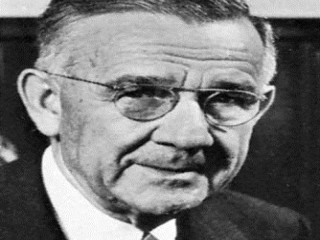
George Hoyt Whipple biography
Date of birth : 1878-08-28
Date of death : 1976-02-01
Birthplace : Ashland, New Hampshire
Nationality : American
Category : Science and Technology
Last modified : 2011-05-17
Credited as : Pathologist, regeneration of hemoglobin in animals, anemia
The American pathologist George Hoyt Whipple found that certain foods, especially liver, stimulate the regeneration of hemoglobin in animals suffering anemia.
George Hoyt Whipple was born in Ashland, New Hampshire, on August 28, 1878. He attended local schools until, at age 13, he transferred to a school in Tilton 15 miles away. Then in 1892 his widowed mother moved to Andover, Massachusetts, so that George could attend Phillips Academy. After graduation he entered Yale, received a degree in 1900, and in 1901 entered Johns Hopkins Medical School. He received his medical degree in 1905 and joined the department of pathology at John Hopkins almost immediately.
Whipple's early work led to the discovery in 1907 of a rare disease now commonly called "Whipple's disease, " which is related to a breakdown in fat storage in the body. In 1907 he accepted a one-year position in pathology at Ancon Hospital in the Panama Canal Zone but returned to Hopkins in 1908 as assistant resident pathologist. He advanced to resident pathologist and assistant professor of pathology in 1909, and in 1911 he was made associate professor.
On June 24, 1914, Whipple married Katharine Ball Waring. That same year he accepted a position as professor of research medicine and director of the Hooper Foundation for Medical Research in San Francisco. The foundation was a new, independent unit of the University of California, and Whipple was responsible for its organization. There he continued experiments started at Hopkins on the metabolism of bile pigments, which are made from hemoglobin that has been released from broken-down red blood corpuscles.
In 1920 Whipple was appointed dean of the University of California Medical School. In 1921 he became professor of pathology and dean of the new School of Medicine and Dentistry at the University of Rochester. The researches of Whipple and his colleagues on bile pigments and hemoglobin regeneration continued and were reported in a long series of scientific articles. The specific use of liver as an agent that stimulates the regeneration of hemoglobin was reported in the American Journal of Physiology in 1925. This discovery paved the way for the use of a raw liver diet in the treatment of pernicious anemia by George Richards Minot and William Parry Murphy. Minot and Murphy shared the 1934 Nobel Prize with Whipple.
Whipple's studies continued unabated, and among many other things he, with his collaborators, determined a long list of specific dietary factors, such as iron and copper, that influence hemoglobin regeneration.
Whipple was an active member of many scientific societies and was associated with the Rockefeller Foundation from 1927 until 1960. He retired as dean in 1953 and as professor of pathology in 1955. Whipple died on February 1, 1976.
















